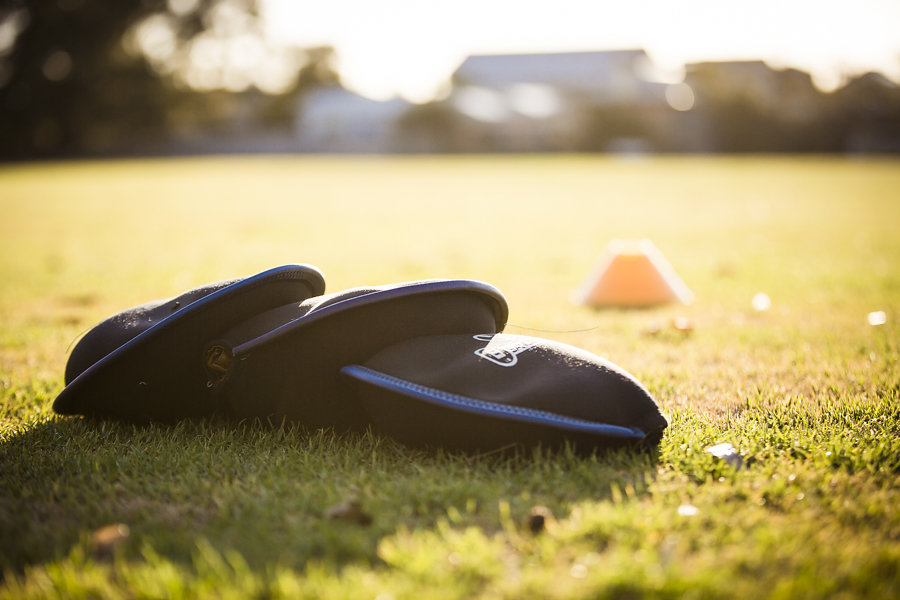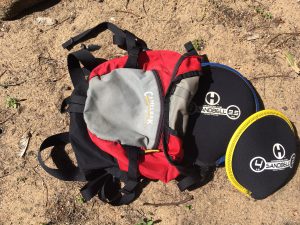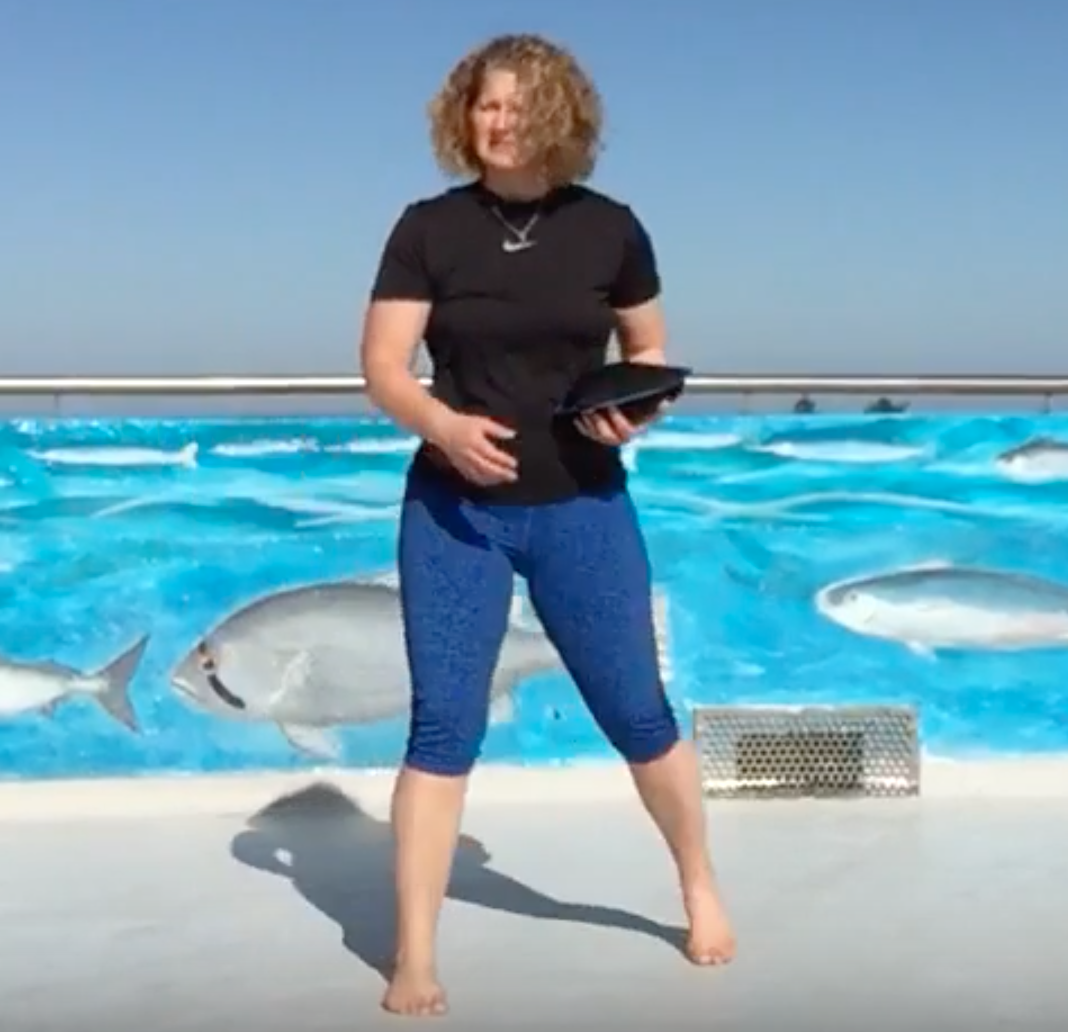Training with Hyperwear Sandbells
Hyperwear Sandbells are a great tool that I incorporate into training sessions with clients and my personal sessions every day. They are an excellent alternative to metal weights when you need portability, adaptability and a reduced risk of injury. They also add an element of fun to your workout because you can be quite dynamic with moving and throwing Sandbells, unlike hard metal weights that you have to handle with extra care.
Versatility and Function – The Benefits of Hyperwear Sandbells
Here are some examples of the VERSATILITY of Hyperwear Sandbells:
Environment – Sandbells can be used in any environment; indoors, outdoors, at the beach or the park. They can even get wet.

Portability
Sandbells are very portable and travel well. Fancy a workout on the beach? Chuck ’em into the boot or trunk of the car. They won’t roll and clunk around like plates or a dumbell.
Replaces the metal
You can use a Sandbell to do the same exercises that you can do with a kettlebell, dumbbell or even a barbell.
Applies to all styles of training
Sandbells can be adapted to fit any preferred style of training. Whether you gravitate towards traditional weight training like bench presses and squats or towards a progressive style that incorporates games & unpredictability or a little of both, Sandbells fit the bill.
The portability and versatility of Sandbells make them a perfect addition to flesh out your fitness program.
- You can take them to your friend’s house for a motivating workout.
- Pack your Sandbells in the car for your next road trip and never skip a beat.
- Take a Sandbell or two with you to the beach or park for your next workout and treat yourself to an outdoor session.
Toss a couple of Sandbells into your pack. Hyperwear even makes a Fit RUCK Backpack that you can use to carry your Sandbells in or to turn into a super sized Sandbell with multiple handles for training. Once you have that sorted, grab a bottle of water and walk to your favourite outdoor spot. The added weight in your pack will ramp up your walk for a higher metabolic demand and a greater calorie burn without jabbing into and hurting your back. Once you get to your destination, you can have a great outdoor workout doing strength, cardio or restorative exercises and movements.

Toss a few sandbells into your pack.
Functionality of Hyperwear Sandbells:
What are some of the training dynamics of Hyperwear Sandbells and why should you train with them?
Dynamic Load
The sand in a Hyperwear Sandbell is loosely packed which allows the internal mass to dynamically shift as you move the neoprene shell. Your grip constantly has to adapt and re-grip to hold onto the shifting sand, thus dynamically strengthening your grip. This is important in our Western Culture where opportunities to work with our hands are limited.
Overcome Inertia
The dynamic nature of sand in the Sandbell means that you have thousands of independently shifting grains of sand that you have to move each time you change direction of the neoprene bell. The sand does not move as a unit the way a solid dumbbell does. You have to get every grain to cooperate and move to where you want them to go.
Overcoming this movement inertia creates a greater muscular and metabolic demand on your body than other static loads would.
Safe for Ballistic Movements
Sandbells are safe to throw, slam and catch. Play game of catch with your partner or trainer. Get a really satisfying aggression release by slamming your sandbell onto the floor or against the wall. Hold it while you do plyometrics or steps – up. Get creative!
How does working out with Hyperwear Sandbells reduce the risk of injury?
One key consideration is that Sandbells are very user friendly.
For instance, a client recently dropped a 3.5 kilogram/ 8 pound Hyperwear Sandbell on my foot by accident. She was mortified, fearing that she had hurt me and immediately started apologising. To her relief and surprise, I said, “It’s fine, it’s just sand. It wouldn’t have hurt if you had dropped a 50 pound Sandbell on my foot.”
She seemed a bit surprised by my reaction. Her immediate fear was that she had dropped a 3.5 kg weight on my foot, which, ordinarily would have been very dangerous…but she hadn’t. She had actually only dropped a little bit of sand on me. HOW? The mass of the sand in a Sandbell is distributed throughout the whole interior surface area of the neoprene bag. The whole surface area of the Sandbell would have had to land on my foot for me to feel the impact of the entire 3.5 kilograms. Even if it had, so what? There is a great amount of fluidity and dynamic flow to sand. Meaning that the mass of the area of sand that did land on my foot, quickly and easily distributed around my foot.
Pretty cool.
That is one reason why I train with Hyperwear Sandbells.
You wouldn’t want to try dropping a hard plate, dumbbell or kettlebell on the floor let alone onto your foot. No matter how much of it lands on you, it is going to hurt and very likely will break something.
What weights do Sandbells come in?
You can purchase Hyperwear Sandbells in the best weight ranges for you to perfect your workout. They range in weight from 1, 2, 3, 3.5 kilograms etcetera all the way up to 23 kilograms. You can purchase them already filled or empty. I recommend that you buy them empty so that you save on shipping. If you buy empty Sandbells, Hyperwear includes filling instructions with your order. I suggest that you also buy a funnel with your order or have one already ready for the task. All you need to do when your Sandbells arrive is fill them with clean, dry, play sand that you can purchase at your local hardware store.
Who am I? What are my experiences with Hyperwear Sandbells?
I am a Certified Sandbell Trainer taught by Hyperwear Sandbell Master Trainer John Polley. I am fortunate to have the pleasure of working with JP as a Movement Coach at his studio at Be Free; Movement, Lifestyle and Wellness in North Beach, Western Australia. Working with JP means that I get to learn and collaborate on new training methods for clients every day. I have also had the pleasure of meeting and attending a Myofascial and Mobility workshop with Ian O’Dwyer of OD’ on Movement. Ian is a founding member of PTA Global and wrote the Hyperwear Sandbell Level 1 Training Certification Manual.
Do you train with Sandbells?
Are you thinking about adding them to your exercise program? What else would you like to know?
Leave a comment at the bottom and share the love. Leaving a comment makes it easier for other people who might benefit from the post to find it, and it helps me spread the word.
Ta!


6 replies to "Training with Hyperwear Sandbells"
Tammy, many people can’t actually visualise spread weight. No matter the material they think of it as a ‘point’ load. I guess it is like the old question, “what is heavier a tonne of lead or a tonne of feathers?’ The answer is almost guaranteed to be lead! Well I say a tonne is a tonne. Feathers just take up more room to get there!
What would be great is if you would do some basic exercise posts. At least one for us getting oldies!
Will be visiting your site again to see if you do this.
And walking on the beach sand is a good exercise all by itself.
Ciao
Helen
Ah, will do Helen! Yes, I agree, a tonne is a tonne and if a whole 50 pound bag of compressed sand fell on a person, I suspect it would hurt.
The beauty of the sandbells is that the sand is not compressed and it flows with motion and gravity. This makes it a dynamic medium to work with for resistance and strength training because our bodies have to constantly adapt to the changing load.
Thank you for the suggestion of some basic exercises for you “getting oldies”. I have some great ideas in mind.
Check back again soon.
Tammy, How heavy can you get Sandbells up to? Does the shifting sand cause any stability/form issues in the workout? I’ve only worked out with fixed plates and any shift in the weight can be dangerous.
Hi Ollie,
Thank you for your helpful questions.
Sandbells come as heavy as 23 Kilograms or 50 pounds. To help answer your question, I updated the second video in the post to demonstrate how the sand shifts inside the sandbell.
Since the load can shift a bit, I would stick with fixed bars and plates for max load training to failure, especially when you need maximum control of the load to protect your spine. Otherwise, sandbells are pretty much all purpose!
Warm Regards
Ooh, I’d like me some of these. Thank you for the information, also love the fact that you have some useful videos on here for days when I really don’t feel like reading. Lovely site.
Thank you.
Yes, Dee, they are pretty cool. Thank you for the lovely feedback. I’m glad you enjoyed the videos, too. I had to redo them a few times until I was happy with the result:).
Warm Regards,
Tammy